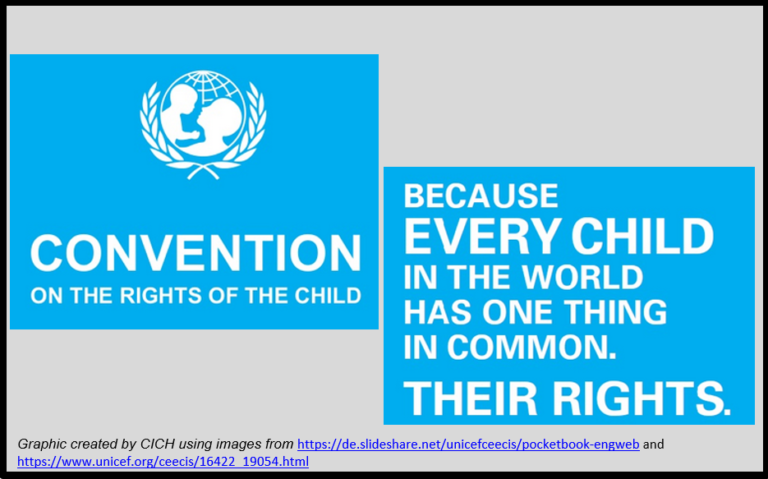6.10.1 Convention on the Rights of the Child – Right to a clean environment

On November 20, 1989, the United Nations General Assembly adopted the Convention on the Rights of the Child and opened it for signature. It came into force on September 2, 1990, after it was ratified by the required number of nations. 196 countries, including Canada, have signed the Convention on the Rights of the Child, making a promise to children to protect and promote their rights to survive and thrive, to learn and grow, to make their voices heard and to reach their full potential.1
Article 24 and Article 29 of The United Nations Convention on the Rights of the Child provide child rights protections related to the environment.
Article 24 is related to a child’s right to the highest attainable standard of health, including the right to nutritious food and safe drinking water as well as protection from environmental pollution.
Article 29 is related to the child’s right to information on environmental health issues and defines environmental education as one of the goals of education.
Together these Articles, as well as many other Articles within the Convention on the Rights of the Child, help protect children’s rights, including their right to a safe and healthy environment.
1 United Nations Human Rights Office of the High Commissioner. (1989). Convention on the Rights of the Child. http://www.ohchr.org/EN/ProfessionalInterest/Pages/CRC.aspx– accessed March 12th, 2017.
Article 24
1. States Parties recognize the right of the child to the enjoyment of the highest attainable standard of health and to facilities for the treatment of illness and rehabilitation of health. States Parties shall strive to ensure that no child is deprived of his or her right of access to such health care services.
2. States Parties shall pursue full implementation of this right and, in particular, shall take appropriate measures:
(a) To diminish infant and child mortality;
(b) To ensure the provision of necessary medical assistance and health care to all children with emphasis on the development of primary health care;
(c) To combat disease and malnutrition, including within the framework of primary health care, through, inter alia, the application of readily available technology and through the provision of adequate nutritious foods and clean drinking-water, taking into consideration the dangers and risks of environmental pollution.
Article 29
1. States Parties agree that the education of the child shall be directed to:
(a) The development of the child’s personality, talents and mental and physical abilities to their fullest potential;
(b) The development of respect for human rights and fundamental freedoms, and for the principles enshrined in the Charter of the United Nations;
(c) The development of respect for the child’s parents, his or her own cultural identity, language and values, for the national values of the country in which the child is living, the country from which he or she may originate, and for civilizations different from his or her own;
(d) The preparation of the child for responsible life in a free society, in the spirit of understanding, peace, tolerance, equality of sexes, and friendship among all peoples, ethnic, national and religious groups and persons of indigenous origin;
(e) The development of respect for the natural environment.
